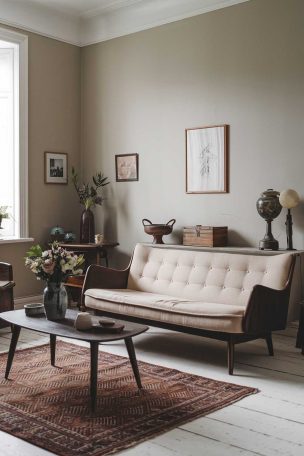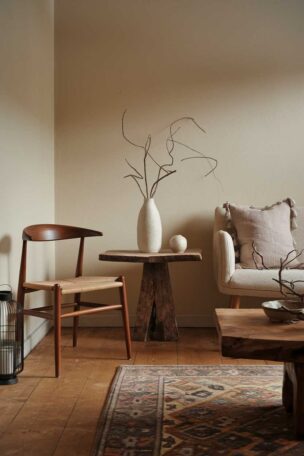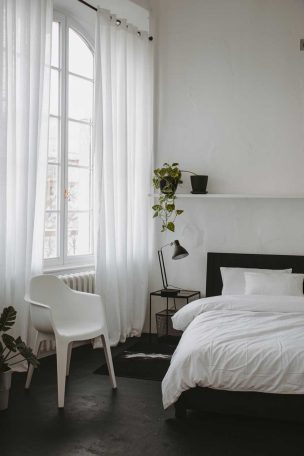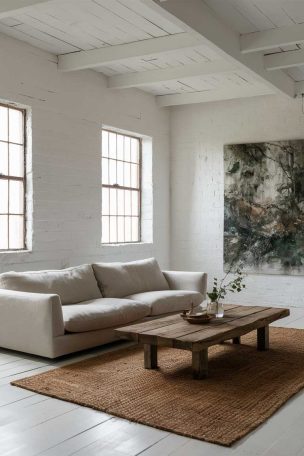There’s something undeniably captivating about a black and white minimalist living room. It’s a design choice that exudes sophistication, timelessness, and a certain je ne sais quoi that never goes out of style. Whether you’re a seasoned interior design enthusiast or just dipping your toes into the world of home decor, creating a space that balances these two stark contrasts can be both exciting and challenging.
In this article, we’ll dive deep into the art of crafting a black and white minimalist living room that’s not only visually stunning but also perfectly functional. We’ll explore everything from color balance and furniture selection to lighting design and those all-important finishing touches. So, grab a cup of coffee, and let’s embark on this monochromatic journey together!
The Fundamentals of Black and White Minimalism
Color Balance
When it comes to black and white minimalism, balance is key. You’ve got two options here, and each creates a distinctly different vibe.
- Option 1: Go predominantly white with black accents. This approach will make your space feel open, airy, and incredibly spacious. Think white walls and white floors, and then punctuate with black furniture or decor pieces. It’s like creating a blank canvas and then adding strokes of contrast for visual interest.
- Option 2: Flip the script and go predominantly black with white elements. This creates a more dramatic, cozy atmosphere. It’s bold, it’s daring, and when done right, it’s absolutely stunning. Picture dark walls with crisp white trim, or a black feature wall behind a white sofa.
But here’s a pro tip: don’t forget about gray! Incorporating shades of gray can soften the stark contrast between black and white, creating a more inviting atmosphere. It’s like the mediator between these two extremes, helping to create a harmonious balance.
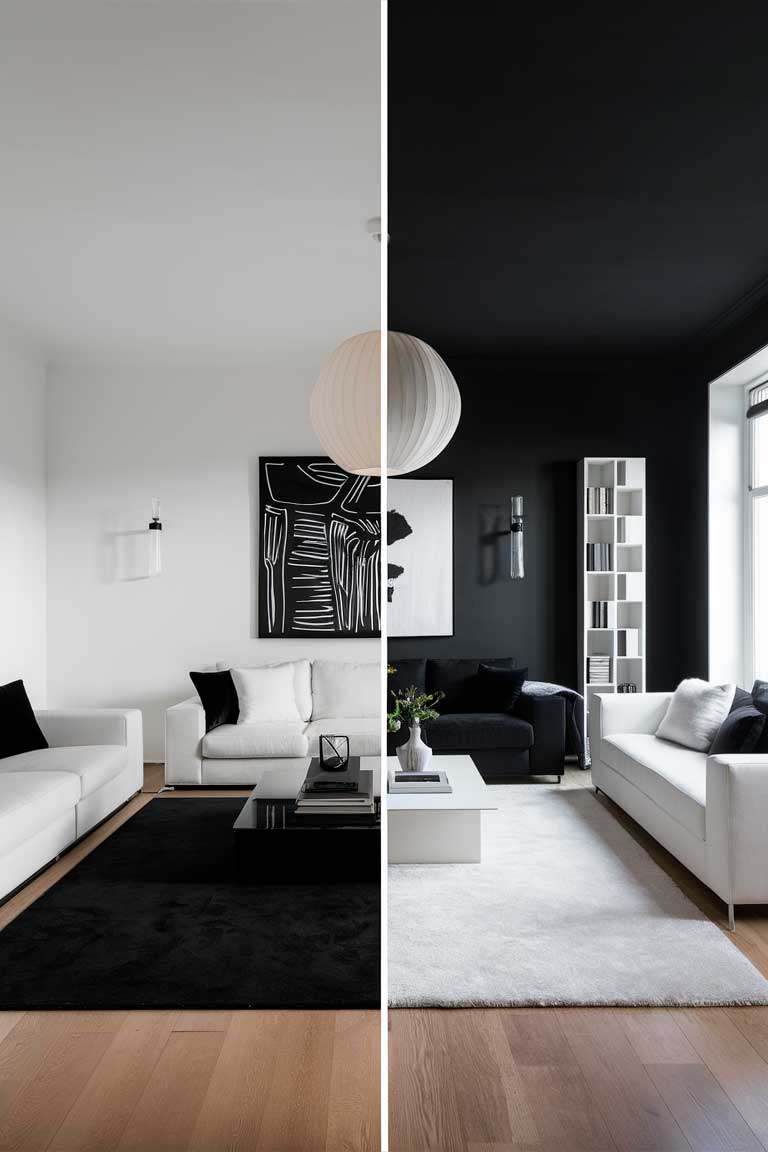
Spatial Concepts
In a minimalist design, space is your friend. The key is to emphasize clean lines and open spaces. This doesn’t mean your room should feel empty – far from it! It’s about the strategic placement of furniture and decor to maintain a sense of flow.
When arranging your space, think about how you move through the room. You want to create clear pathways and functional areas without cluttering the space. A good rule of thumb is to leave plenty of breathing room around each piece of furniture.
Remember, in minimalism, negative space (the empty areas) is just as important as the objects in the room. It gives the eye a place to rest and enhances the impact of your carefully chosen pieces.
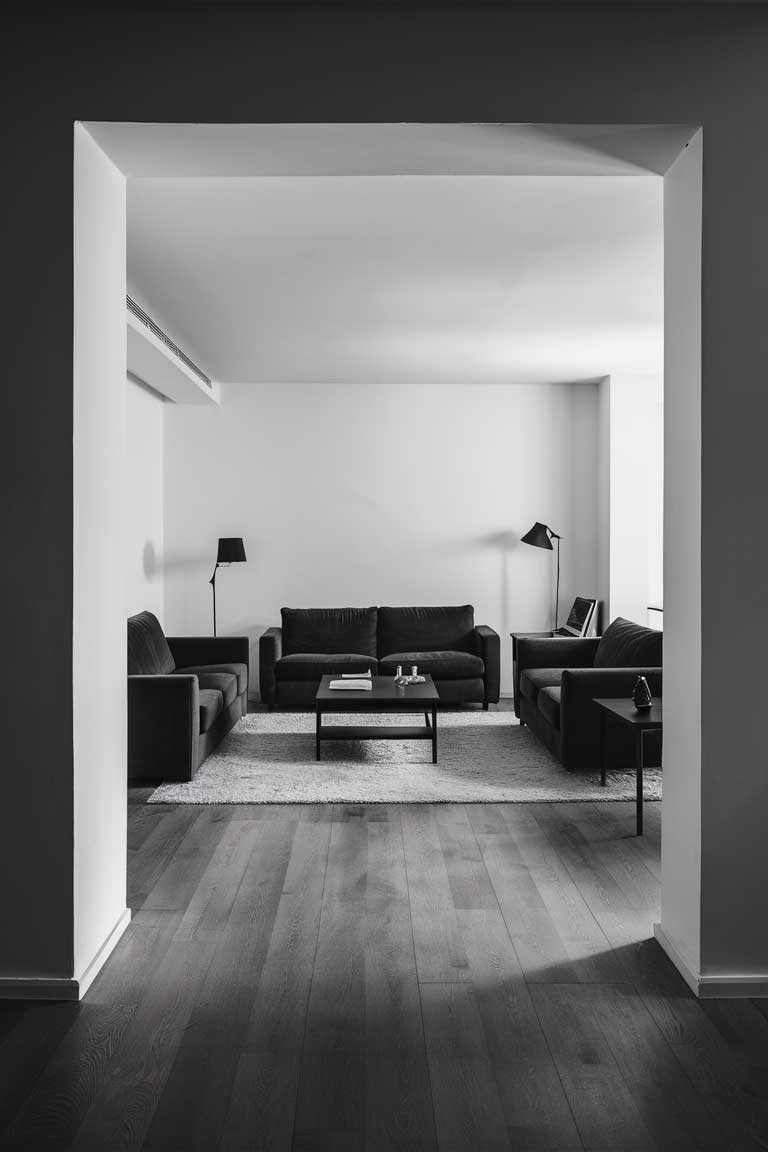
Furniture Selection
Sofas and Seating
When it comes to seating in a black and white minimalist living room, less is more, but comfort is still king. You want pieces that make a statement without overwhelming the space.
A low-profile black leather sofa can be a showstopper. It’s sleek, it’s modern, and it anchors the room beautifully. Pair it with white armchairs featuring sleek metal frames for a perfect contrast. If you’re looking for flexibility, consider gray modular seating. It’s versatile, allowing you to reconfigure your space as needed, and it adds a softening touch to the black and white palette.
Remember, the key is to choose pieces with clean lines and simple silhouettes. Avoid anything too ornate or fussy – we’re going for understated elegance here.
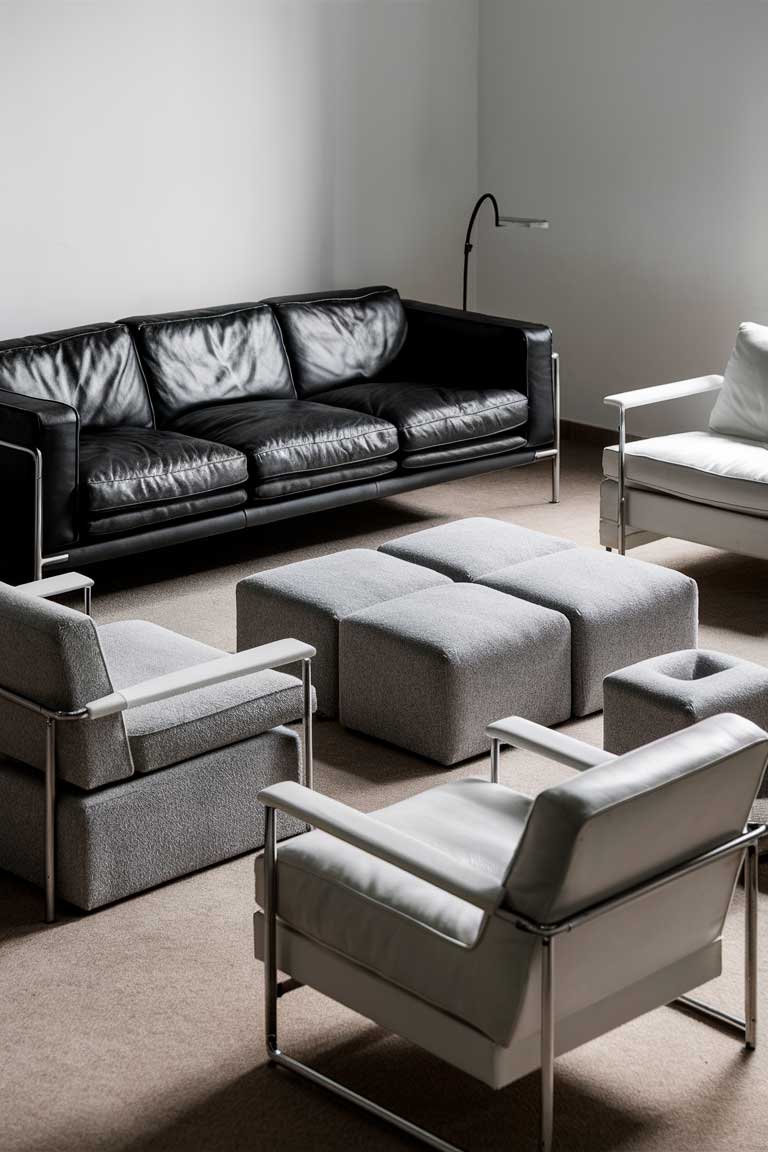
Tables and Storage
In a minimalist space, every piece of furniture needs to earn its keep. When it comes to tables and storage, look for pieces that are both functional and visually appealing.
A white marble coffee table with black metal legs can be a stunning centerpiece. It’s durable, easy to clean, and adds a touch of luxury to your space. For storage, consider black floating shelves against a white wall. They provide necessary storage without adding visual clutter.
If you need side tables, transparent acrylic ones can be a great choice. They provide functionality without adding visual weight to the room. Plus, they’re a conversation starter!
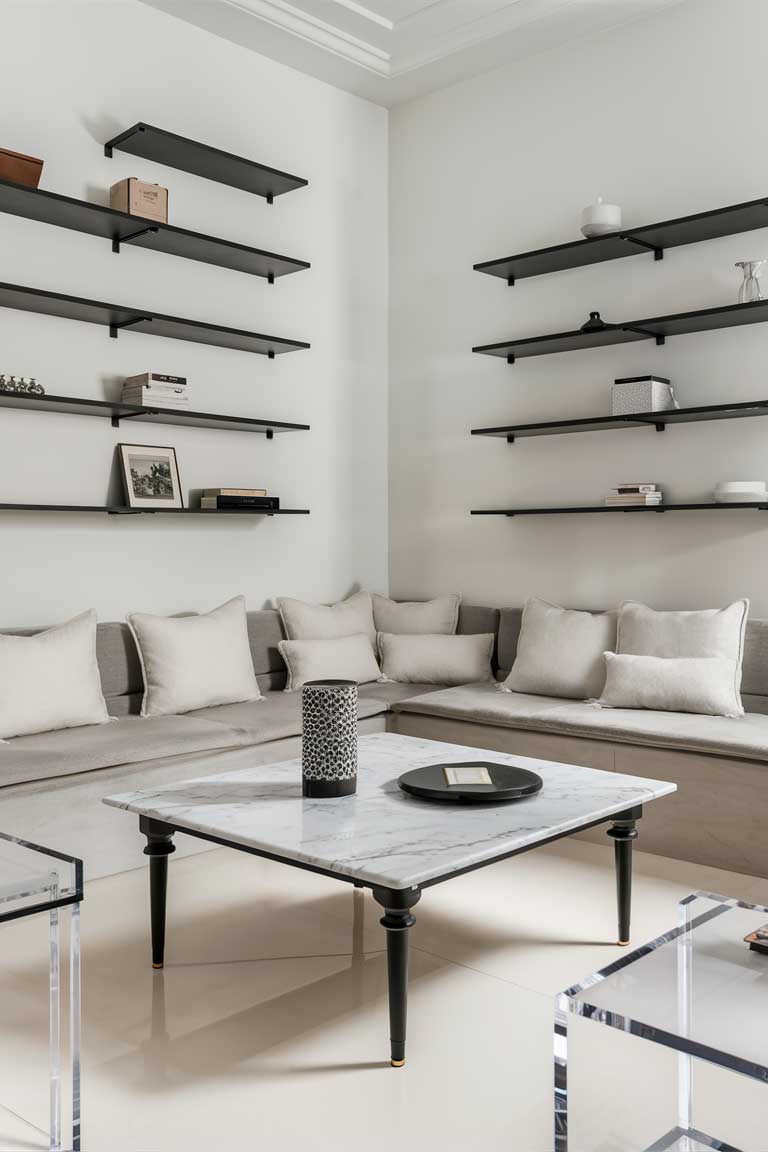
Textural Elements
Flooring
Your choice of flooring can make or break your minimalist design. Because it covers a large surface area, it has a significant impact on the overall look and feel of your space.
High-gloss white tiles can create a stunningly modern look. They reflect light, making your space feel larger and brighter. On the flip side, matte black hardwood floors add warmth and contrast. They’re unexpected in a minimalist space, which makes them all the more impactful.
For an industrial chic vibe, consider large-format gray concrete tiles. They’re durable, easy to maintain, and add an interesting textural element to your space.
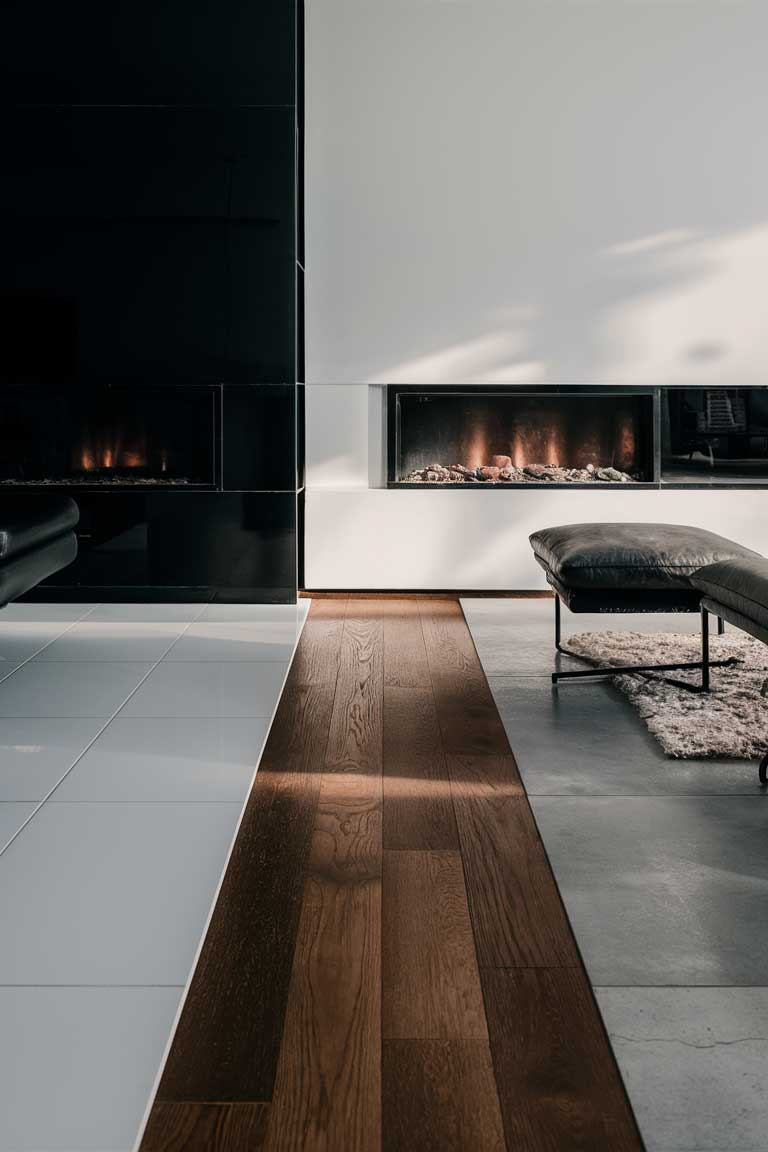
Textiles
Textiles are where you can really have some fun with texture in your black and white minimalist living room. They’re also a great way to add comfort and coziness to what could otherwise be a stark space.
A black and white geometric area rug can define your seating area while adding visual interest. Drape a white faux fur throw over your black sofa for a touch of luxury and comfort. For window treatments, consider charcoal gray linen curtains. They add softness and can help control light without introducing a new color to your palette.
Remember, varying textures is key in a minimalist space. It adds depth and interest without cluttering your design.
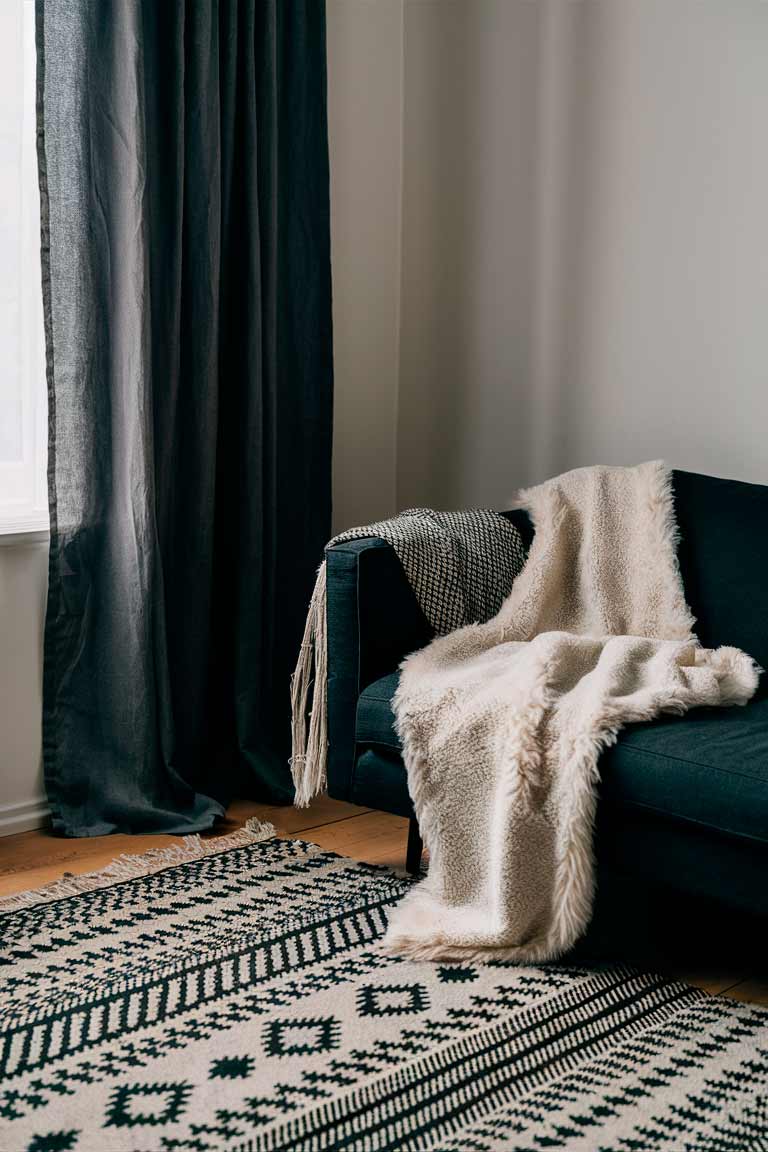
Lighting Design
Natural Light Maximization
In a black and white minimalist space, natural light is your best friend. It brings out the contrast in your color scheme and adds warmth to your space.
If you’re lucky enough to have large windows, make the most of them. Floor-to-ceiling windows with sheer white curtains allow maximum light while still providing privacy when needed. Don’t have big windows? No problem! Strategically placed mirrors can help bounce light around the room, making it feel brighter and more spacious.
Remember, the goal is to create a bright, airy feel that complements your minimalist design.
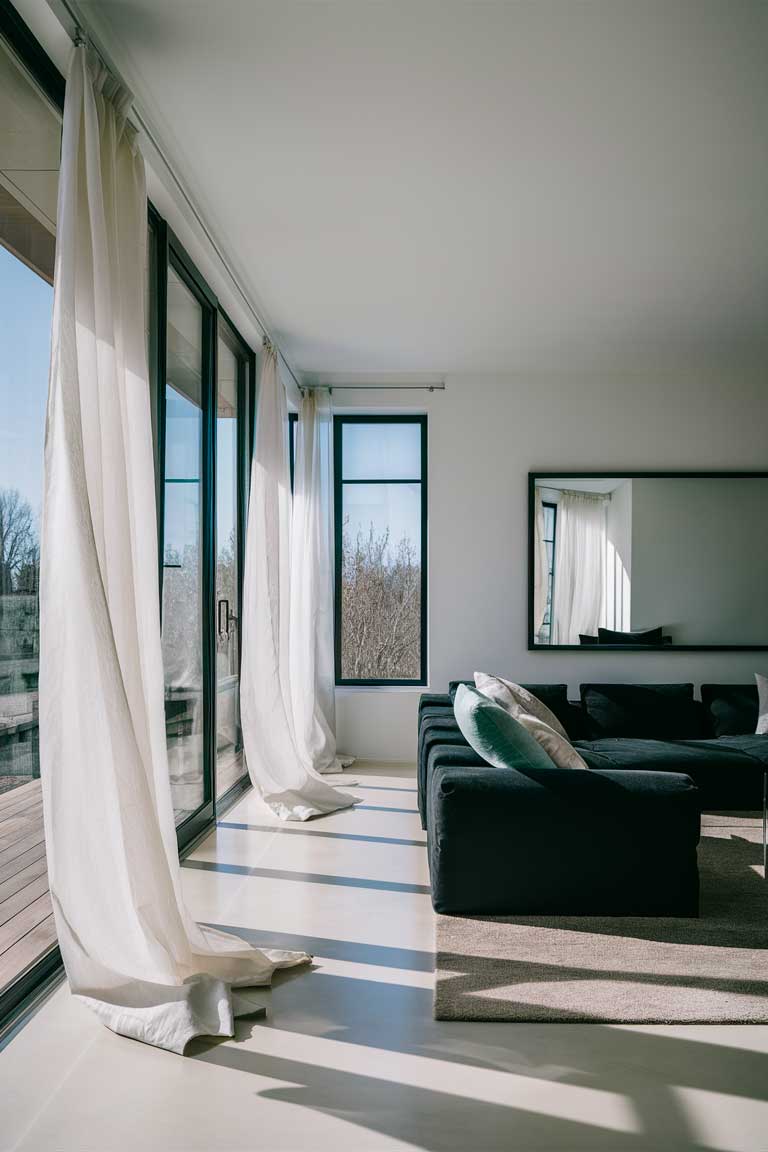
Artificial Lighting
When the sun goes down, your artificial lighting takes center stage. In a minimalist space, your light fixtures can double as sculptural elements.
Matte black pendant lights over a seating area can create a striking focal point. They add visual interest without cluttering your ceiling. A white floor lamp with an adjustable arm provides both form and function – it’s a great addition to a reading nook.
For a clean, uncluttered look, consider recessed lighting. It provides even illumination without interrupting your ceiling line.
The key is to layer your lighting. Combine ambient, task, and accent lighting to create a flexible scheme that can adapt to different moods and activities.
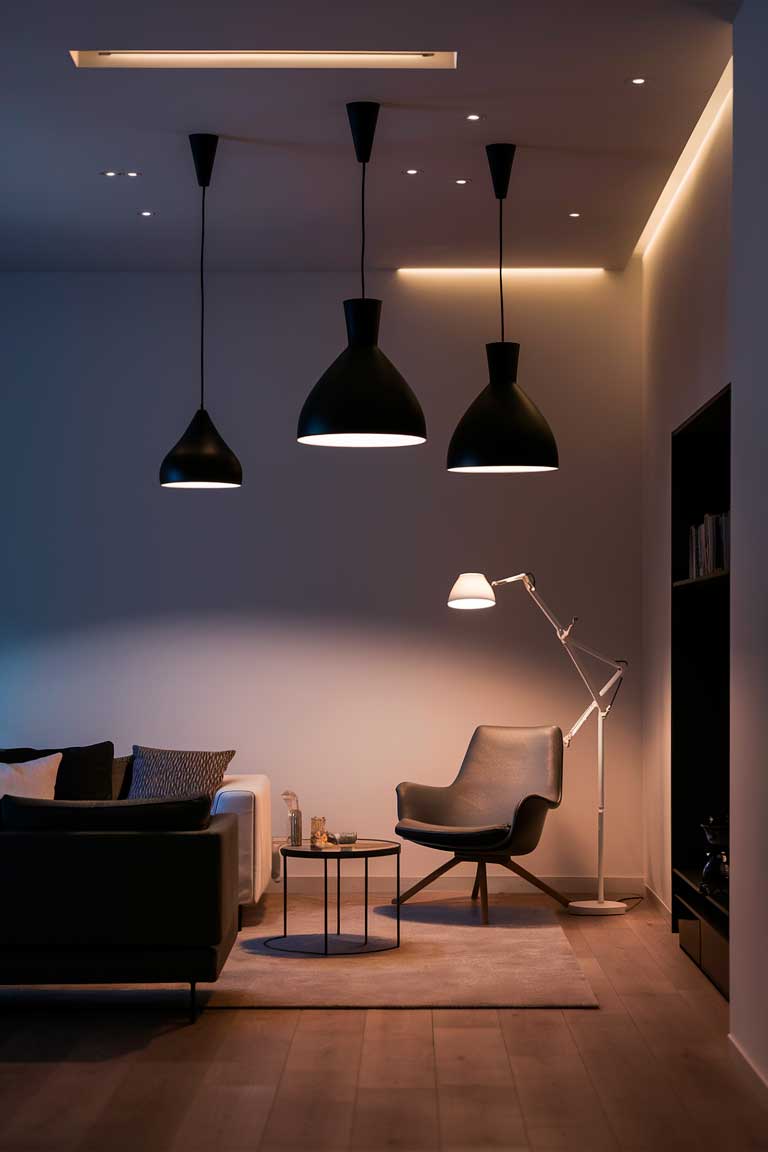
Art and Accessories
Wall Art
In a minimalist space, less is definitely more when it comes to wall art. But that doesn’t mean your walls should be bare! The right pieces can add personality and visual interest to your space.
Oversized black and white photography can make a powerful statement. Think dramatic landscapes or abstract close-ups. Minimalist line drawings in thin black frames can add a touch of artistry without overwhelming your space. For something a bit different, consider a white-on-white textured canvas. It adds depth and interest while maintaining your color scheme.
Remember, the key is to choose pieces that complement your space, not compete with it.
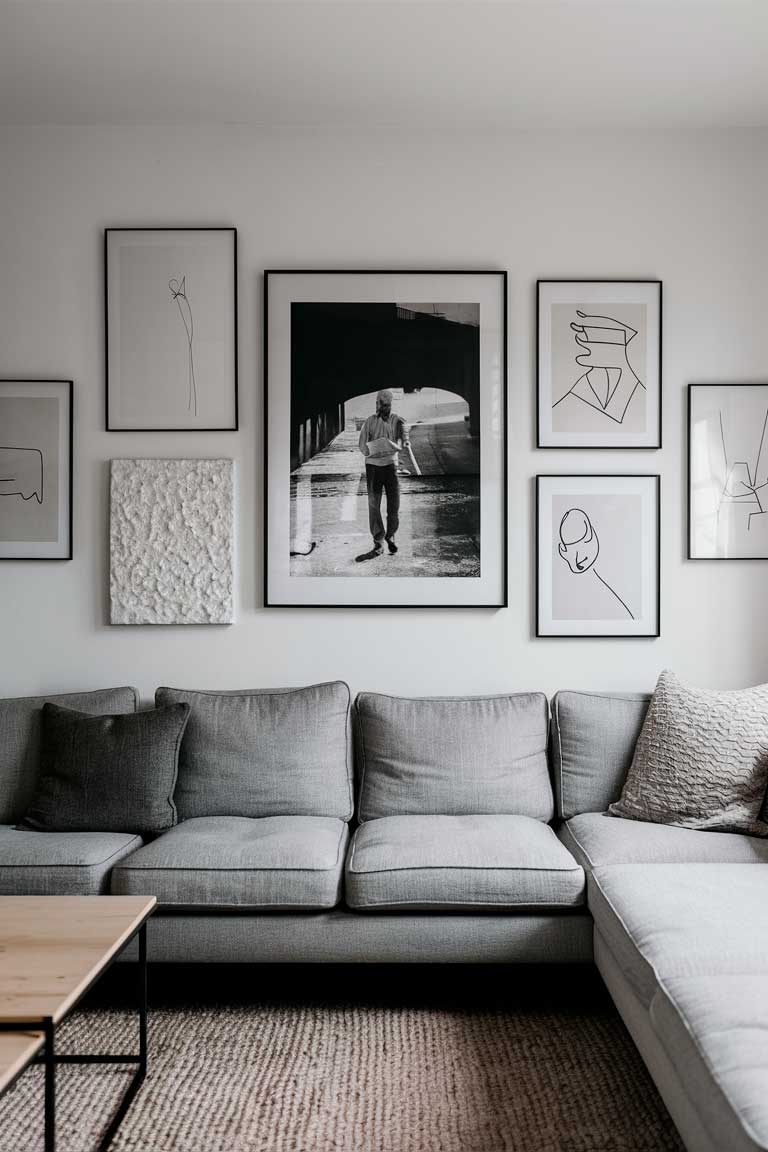
Decorative Objects
When it comes to decorative objects in a minimalist space, quality always trumps quantity. Choose a few statement pieces that really speak to you.
A single large black ceramic vase can make a stunning focal point on a white shelf or table. A stack of design books with monochrome covers adds an intellectual touch and can be a great conversation starter. For a touch of luxury, consider a white marble sculpture on a black pedestal.
The key is to be selective. Each piece should earn its place in your space.
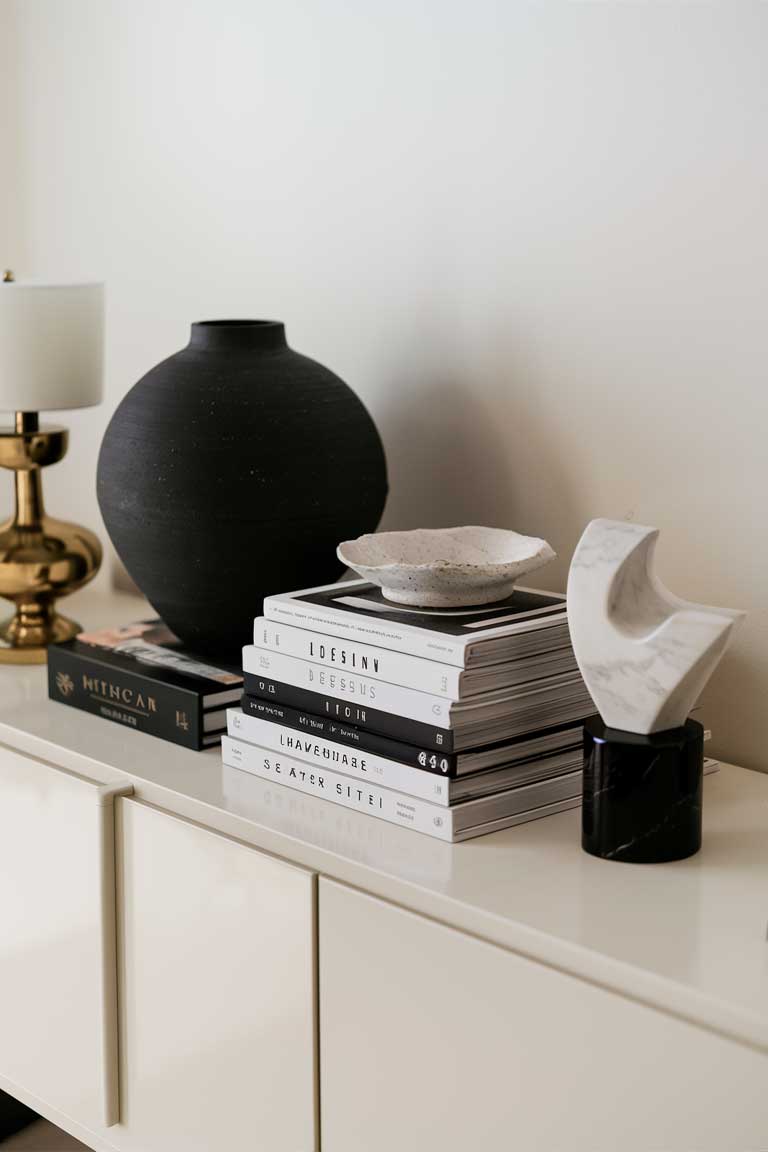
Incorporating Nature
Indoor Plants
Just because you’re working with a black and white palette doesn’t mean you can’t bring in a touch of nature. In fact, the contrast of green plants against a monochrome background can be striking.
A large fiddle leaf fig in a white planter can add height and drama to a corner of your room. For something smaller, consider a collection of succulents in sleek black pots on a windowsill or shelf. Want to add some vertical interest? Try hanging plants – they’re a great way to add life to your space without taking up floor or surface area.
Plants not only add visual interest, but they also improve air quality and can boost your mood. It’s a win-win!
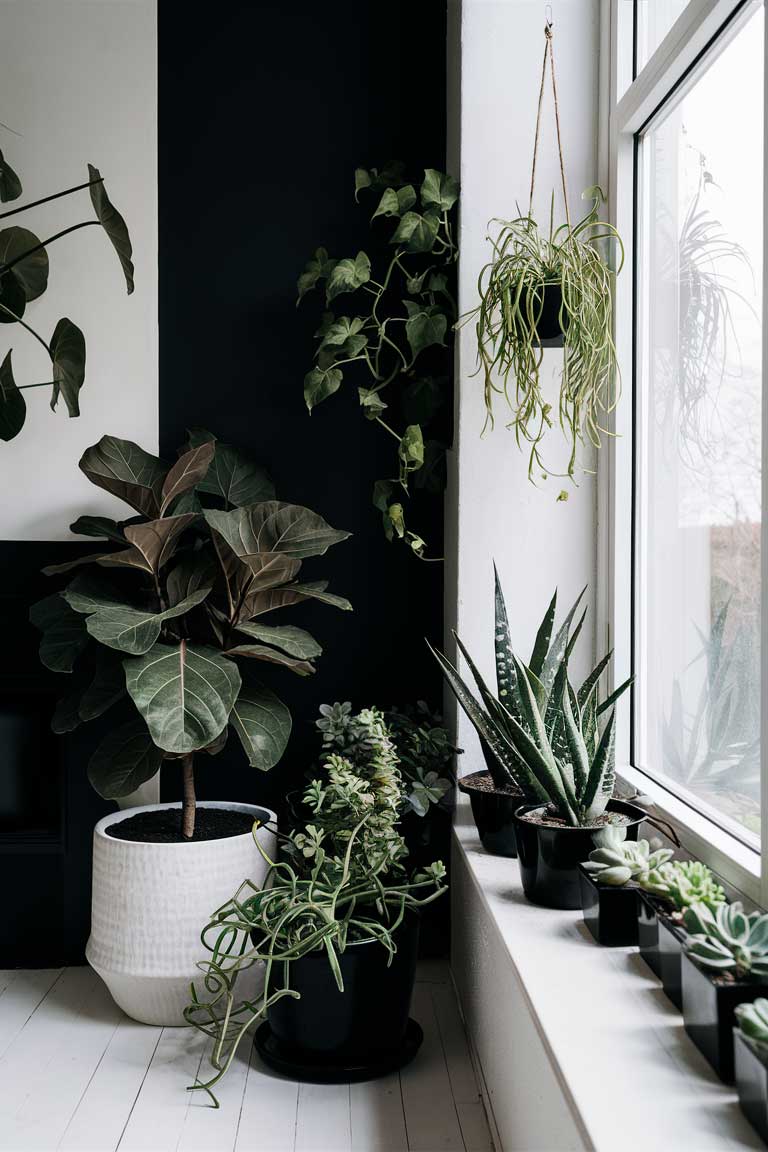
Accents and Pops of Color
Metallic Accents
While we’re sticking to a black and white base, adding metallic accents can elevate your minimalist design to new heights. They add warmth and interest without disrupting your color scheme.
Brass or copper details can add a touch of warmth and luxury. Think drawer pulls, lamp bases, or even a small side table. For a more modern edge, chrome or stainless steel accents work beautifully in a minimalist space. A chrome floor lamp or stainless steel photo frames can add a sleek, contemporary touch.
Remember, a little goes a long way with metallic accents. Use them sparingly for maximum impact.
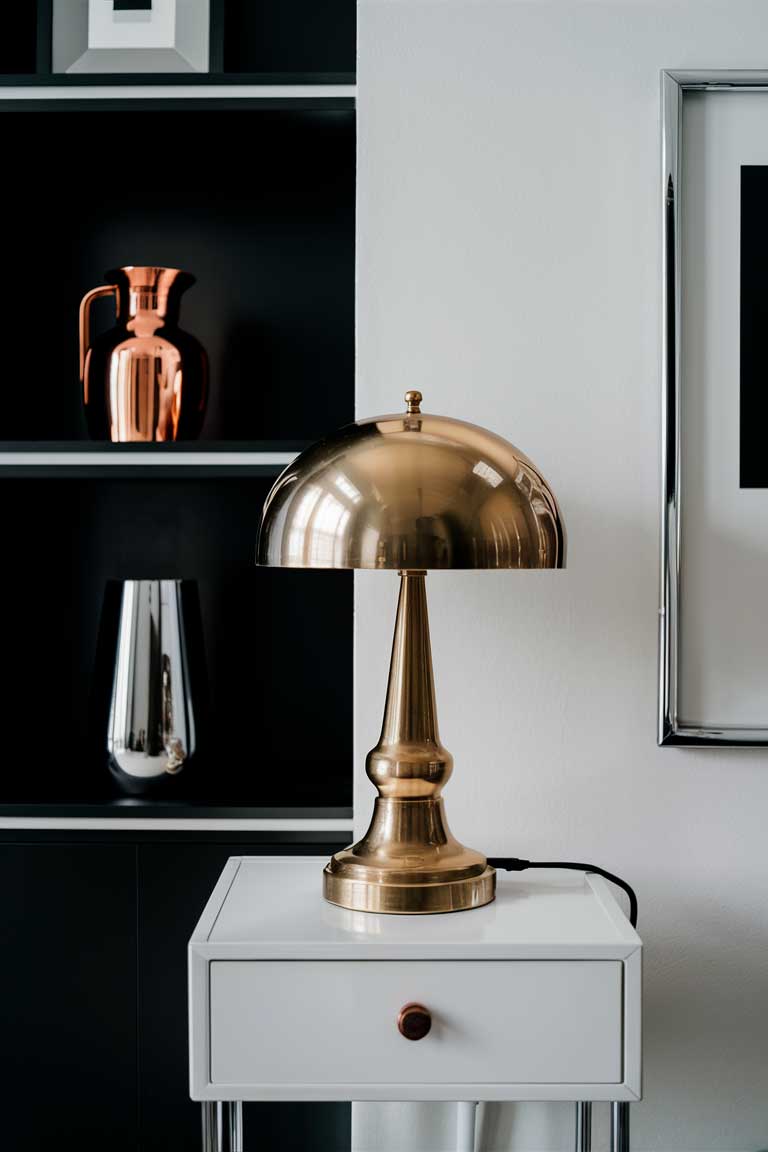
Optional Color Additions
While a strict black and white palette can be stunning, don’t be afraid to introduce a pop of color if it feels right for your space. The key is to be intentional and sparing with your color choices.
A single red armchair can become a striking focal point in your living room. Navy blue throw pillows on a white sofa can add depth without overwhelming your color scheme. Or consider a vibrant yellow art piece as a bold accent against a white wall.
Remember, in a minimalist space, a little color goes a long way. Choose your colorful elements carefully and let them shine against your black and white backdrop.
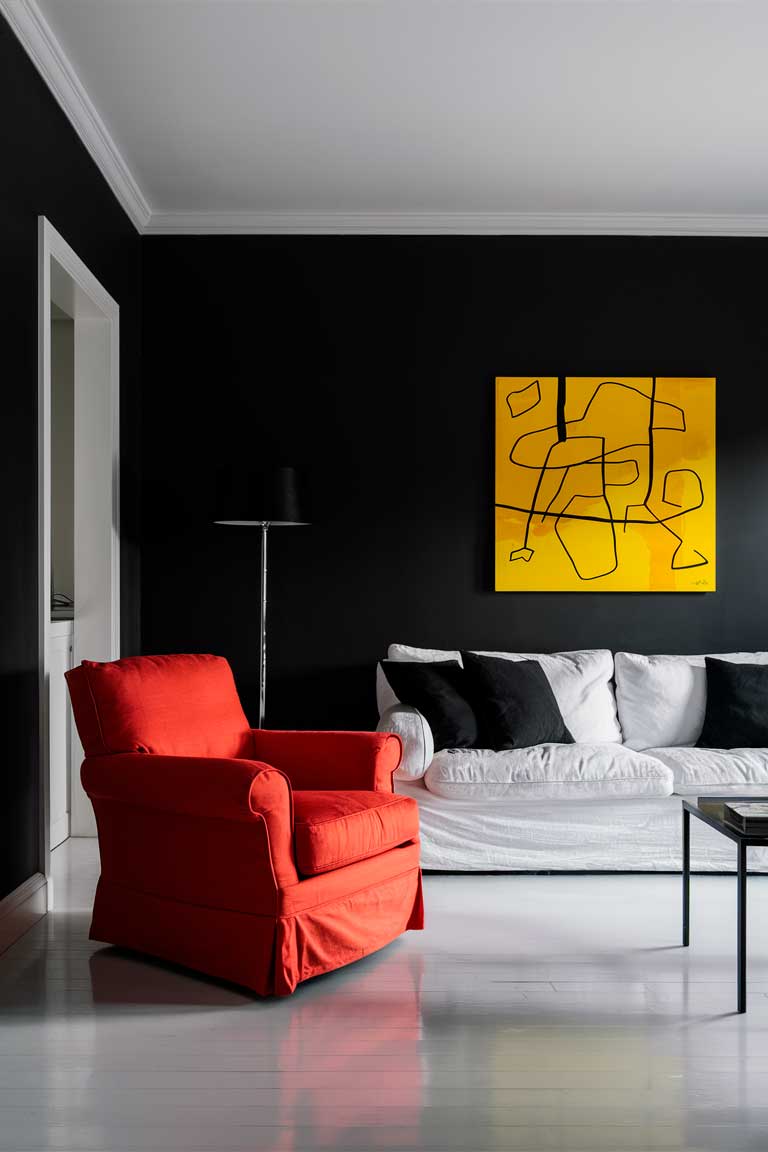
Layering and Texture Techniques
Visual Depth
Creating visual depth in a minimalist space is all about subtle layering and thoughtful use of texture. These small details can turn a stark room into a warm, inviting space.
Consider layering area rugs for an unexpected twist. A large sisal rug as a base with a smaller geometric black and white rug layered on top can add interest and define spaces within your room. For your walls, a textured wallpaper in a subtle pattern can add depth without overwhelming your space. Think tone-on-tone patterns or a very light gray on white.
These layers of texture add visual interest and depth to your space without cluttering it up.
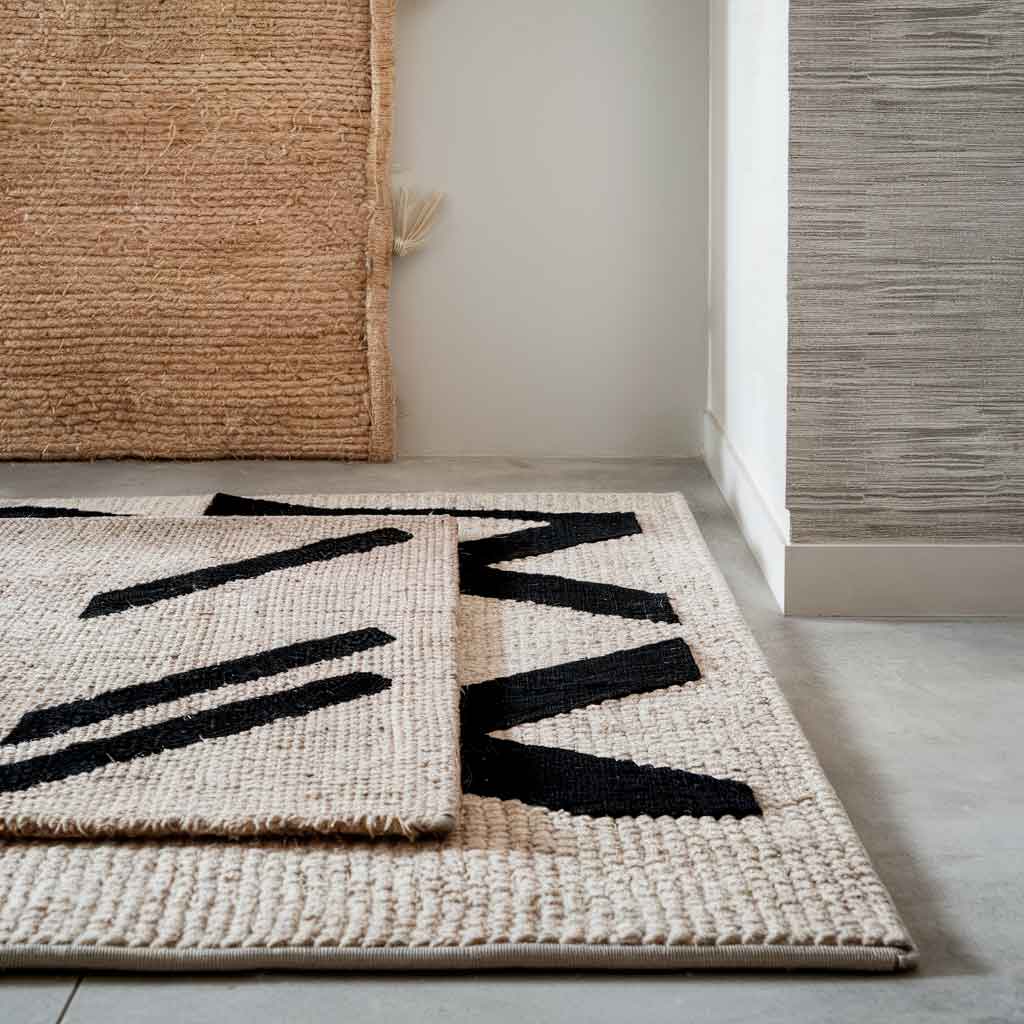
Comfort Elements
Minimalism doesn’t mean sacrificing comfort. In fact, cozy elements can make your black and white space feel more inviting and livable.
Chunky knit throws in varying shades of gray can add warmth and texture to your sofa or armchair. Mix up your pillow textures – combine velvet, linen, and leather pillows in your black and white palette for a luxurious, layered look.
These comfort elements not only make your space more inviting, but they also add another layer of visual interest to your minimalist design.
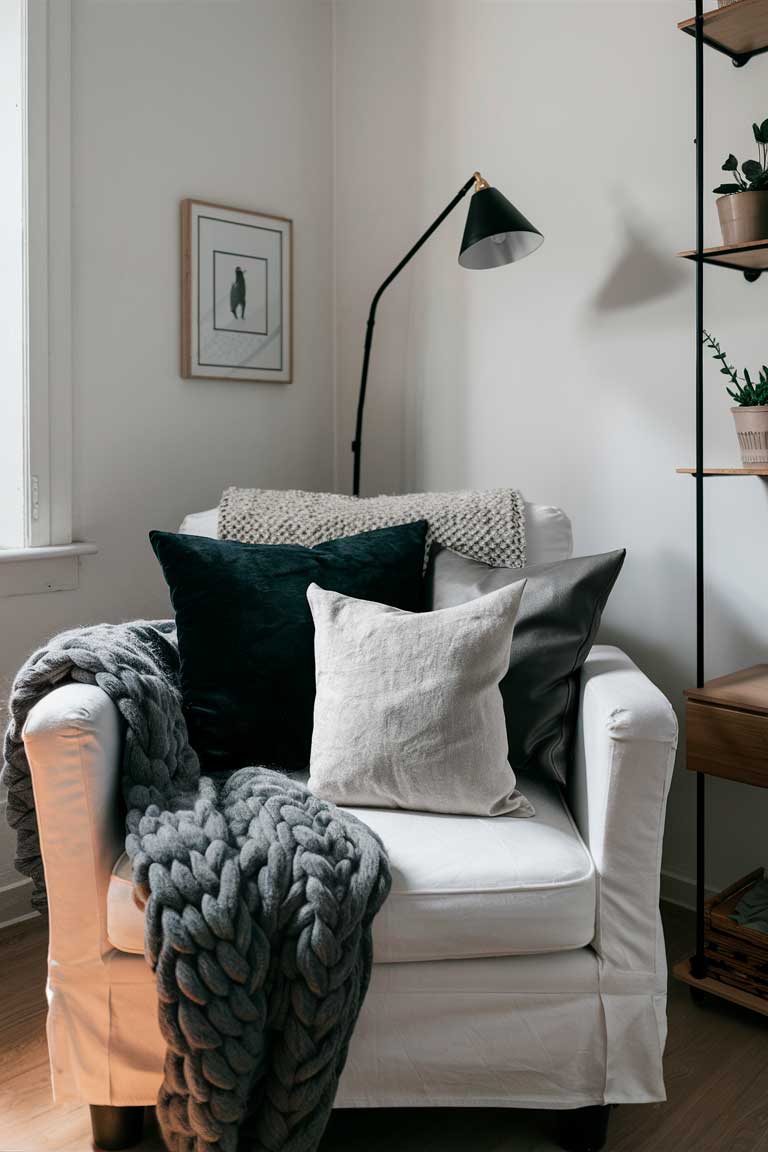
Conclusion
Creating a black and white minimalist living room is an exercise in restraint, balance, and thoughtful design. It’s about creating a space that’s both visually striking and functionally comfortable. Remember, the key principles are:
- Balance your use of black and white
- Embrace clean lines and open spaces
- Choose furniture and decor with purpose
- Play with texture to add depth and interest
- Maximize natural light and layer your artificial lighting
- Use art and accessories sparingly but impactfully
- Don’t be afraid to incorporate nature or a pop of color
Most importantly, make the space your own. Minimalism isn’t about creating a showroom – it’s about crafting a livable space that brings you joy and peace. So take these ideas, adapt them to your lifestyle, and create a black and white minimalist living room that’s uniquely you.


